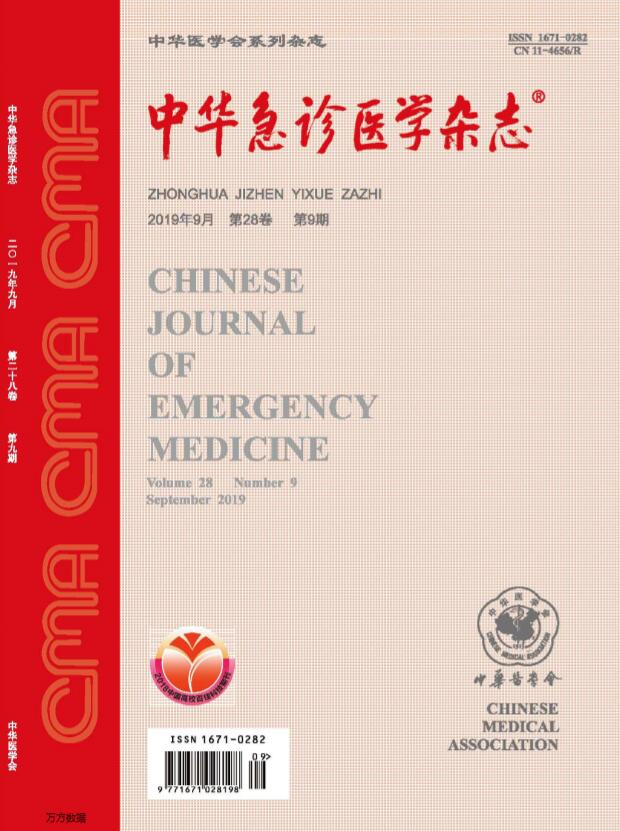A feasibility study of parameter-optimized MRI as the first choice for imaging examination in patients with acute ischemic stroke
Q4 Nursing
引用次数: 0
Abstract
Objective To investigate the feasibility of parameter-optimized magnetic resonance imaging (MRI) as the first choice for imaging examination in patients with acute ischemic stroke (AIS), and to assess the effects of quality improvement (QI) measures on shortening the door-to-needle time (DNT). Methods A retrospective case-control study was conducted. A total of 69 AIS patients hospitalized at the Department of Neurology of the People's Hospital of Wuzhou from August 2015 to July 2018 were enrolled in the study, and the head MRI was used as the first choice for imaging examination. All patients received the intravenous thrombolytic therapy with recombinant tissue plasminogen activator (rt-PA). Patients with AIS undergoing intravenous thrombolysis from August 2015 to March 2017 were included in the control group, and those receiving intravenous thrombolysis after QI measures from April 2017 to July 2018 were included in the experimental group. QI included informing the stroke team in advance by emergency physicians, treatment process changing from serial procedure to the parallel one, optimization of MRI scanning parameters, and use of rapid test instruments. The MRI scanning time was compared between the two groups. The DNT of the two groups was compared, and paired-samples t test was used. The proportion of patients who underwent MRI scan and DNT<60 min was compared between the two groups, and the χ2 test was used. Results Compared with the control group, the proportion of patients undergoing MRI scan in the experimental group was increased (82% vs 58%, χ2=4.58, P=0.032); MRI scanning time was shortened (4 min 37 s vs 10 min 21 s); DNT (min) was shortened (59.32±10.19 vs 93.48±24.81, t=7.189, P<0.01); and the proportion of patients with DNT<60 min was significantly increased (68% vs 6%, χ2=27.190, P<0.01). Conclusion Parameter-optimized MRI as the first choice for imaging examination in AIS patients with the onset time <4.5 h was feasible, and the DNT was significantly shortened by QI measures. Key words: Magnetic resonance imaging; Acute ischemic stroke; Door-to-needle time; Quality improvement参数优化MRI作为急性缺血性脑卒中患者首选影像学检查的可行性研究
目的探讨参数优化磁共振成像(MRI)作为急性缺血性脑卒中(AIS)患者首选影像学检查的可行性,并评价质量改善(QI)措施对缩短进门到针时间(DNT)的效果。方法采用回顾性病例对照研究。选取2015年8月至2018年7月在梧州市人民医院神经内科住院的AIS患者69例,采用头部MRI作为首选影像学检查。所有患者均接受重组组织型纤溶酶原激活剂(rt-PA)静脉溶栓治疗。2015年8月至2017年3月行静脉溶栓的AIS患者为对照组,2017年4月至2018年7月行QI措施后静脉溶栓的患者为实验组。QI包括急诊医生提前通知卒中团队、治疗过程由串行程序改为并行程序、优化MRI扫描参数和使用快速测试仪器。比较两组患者的MRI扫描时间。比较两组的DNT,采用配对样本t检验。比较两组患者接受MRI扫描及DNT<60 min的比例,采用χ2检验。结果与对照组相比,实验组接受MRI扫描的患者比例增加(82% vs 58%, χ2=4.58, P=0.032);MRI扫描时间缩短(4 min 37 s vs 10 min 21 s);DNT (min)缩短(59.32±10.19 vs 93.48±24.81,t=7.189, P<0.01);DNT<60 min的患者比例显著增加(68% vs 6%, χ2=27.190, P<0.01)。结论参数优化MRI作为发病时间<4.5 h的AIS患者影像学检查的首选是可行的,QI措施可显著缩短DNT。关键词:磁共振成像;急性缺血性中风;Door-to-needle时间;质量改进
本文章由计算机程序翻译,如有差异,请以英文原文为准。
求助全文
约1分钟内获得全文
求助全文
来源期刊

中华急诊医学杂志
Nursing-Emergency Nursing
CiteScore
0.10
自引率
0.00%
发文量
8629
期刊介绍:
Chinese Journal of Emergency Medicine is the only national journal which represents the development of emergency medicine in China. The journal is supervised by China Association of Science and Technology, sponsored by Chinese Medical Association, and co-sponsored by Zhejiang University. The journal publishes original research articles dealing with all aspects of clinical practice and research in emergency medicine. The columns include Pre-Hospital Rescue, Emergency Care, Trauma, Resuscitation, Poisoning, Disaster Medicine, Continuing Education, etc. It has a wide coverage in China, and builds up communication with Hong Kong, Macao, Taiwan and international emergency medicine circles.
 求助内容:
求助内容: 应助结果提醒方式:
应助结果提醒方式:


